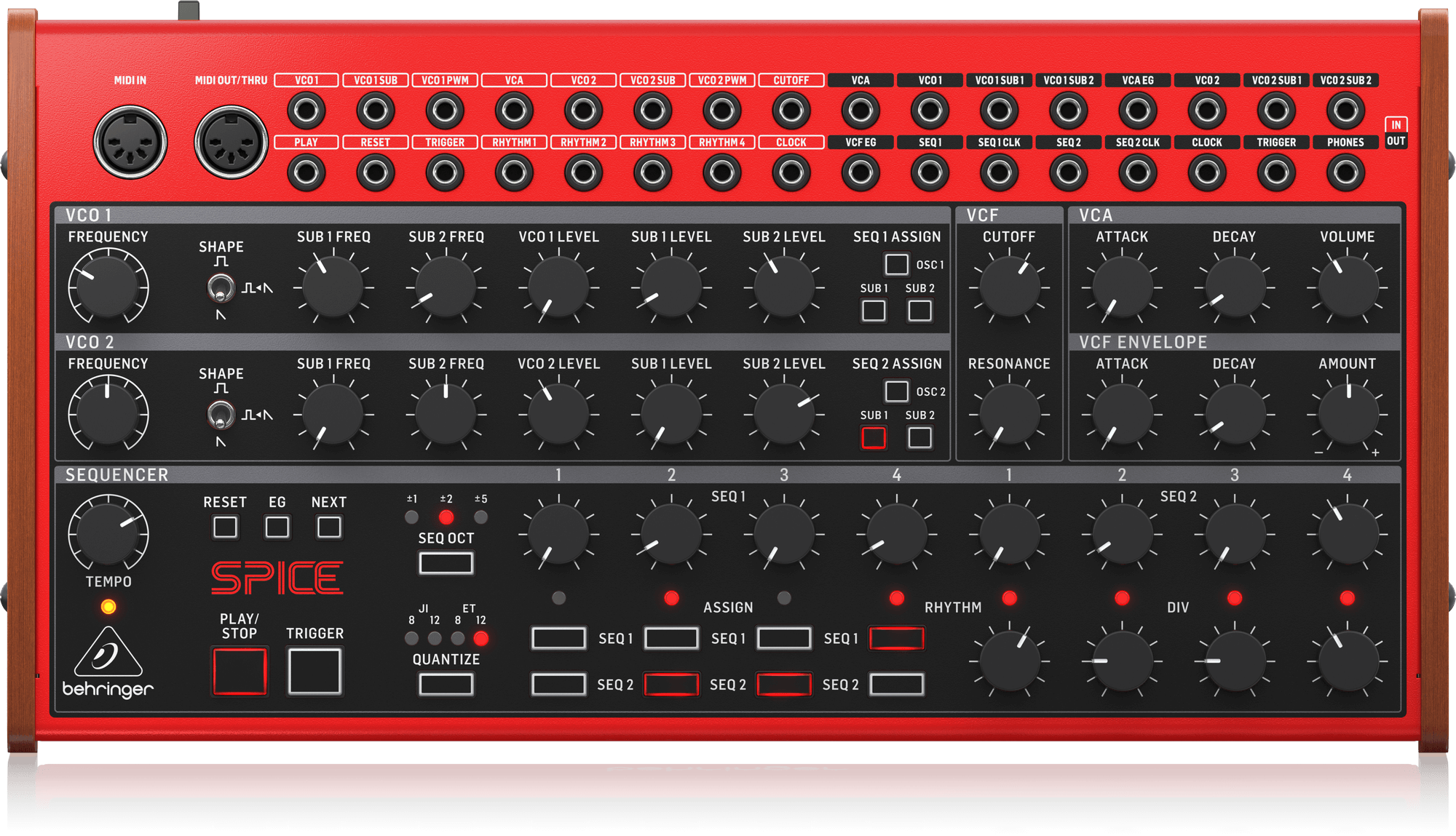Subharmonicon
Moog | 2014
Analog Emulations
Digital Emulations
Subharmonicon is inspired by Joseph Schillinger’s mathematical system for musical composition and is influenced by two analog innovations from the 1930s and 1940s: the Mixtur-Trautonium, which employed a series of subharmonic oscillators to generate electronic undertones, and the Rhythmicon (developed by Leon Theremin!), an instrument capable of sounding multiple harmonically related polyrhythm generators simultaneously. The Mixtur-Trautonium created subharmonics by dividing the frequency of its primary oscillator, while the Rhythmicon created polyrhythms that were multiplications of its primary tempo. These concepts of subharmonics and polyrhythms form the historic roots of the Moog Subharmonicon. The undertone series, or subharmonic series, results from the division of an initial fundamental frequency (f) by successive integer values (unlike the overtone series, which results from integer multiples of the fundamental frequency). Where overtones are found to occur naturally in acoustic sounds, undertones must be produced through more extreme or novel methods, such as electronic circuitry. Polyrhythms employ multiple rhythms playing at once to create complex, interweaving phrases. In the same way that a subharmonic oscillator divides the fundamental frequency (f) to create a musically related subharmonic, each rhythm
